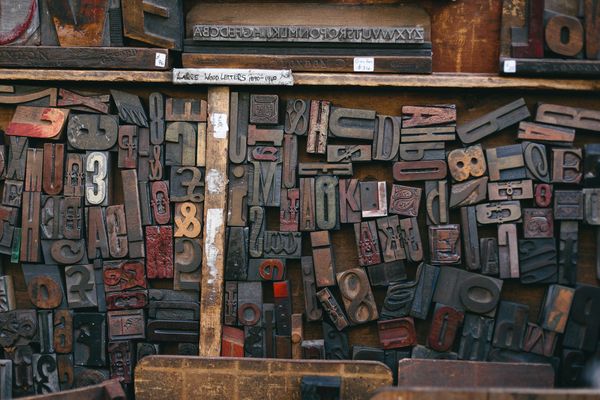2.1.2
Phonemes, Vocal Tract & Articulation
Phonology - Phonemes and the Vocal Tract
Phonology - Phonemes and the Vocal Tract
Phonology is the study of sounds. You will also encounter phonetics, and this is the study of how sounds are produced.


Spoken acquisition
Spoken acquisition
- Acquisition is how we gain and acquire language. We can then consider what types and sounds of language been acquired and how particular words are spoken.


Phonemes
Phonemes
- Despite there being 26 letters in the English alphabet, there are 44 phonemes to describe sounds.
- You will be given a list of phonemes in your exam, so you do not have to remember them all.
- All 44 phonemes will be shown on the following slides...


,h_400,q_80,w_640.png)
,h_400,q_80,w_640.png)


,h_400,q_80,w_640.png)
,h_400,q_80,w_640.png)
The vocal tract
The vocal tract
- The system by which sounds are produced is called ‘the vocal tract’.


Voiced and unvoiced phonemes
Voiced and unvoiced phonemes
- We can describe a phoneme as being voiced or voiceless/unvoiced.
- The difference between these two is to do with the vocal folds. When the vocal folds are vibrating, the sound is voiced.
- You can test this for yourself by pressing your fingers to your throat and feeling the difference between the /p/ sound and the /b/ sound. The /b/ sound is voiced, whereas the /p/ sound is unvoiced.
Phonology - The Place of Articulation
Phonology - The Place of Articulation
You need to be able to say where sounds are produced. Parts of the vocal tract which help to produce sounds are called articulators. Each articulator (or combination of articulators) produces a different type of sound:


Bilabial sounds
Bilabial sounds
- These are produced by using (bi) both (labials) lips. These are sounds like /m/ in words like ‘monkey’.


Labiodental sounds
Labiodental sounds
- These involve using both the teeth and the lip(s). These are sounds like /f/ in words like ‘five’.


Dental sounds
Dental sounds
- These are sounds produced using the teeth. In British Standard English, there are only 2 dental sounds you need to know – the theta (/θ/) sound in words like ‘through’ and the thorn (/ð/) sound in words like ‘this’.


Alveolar sounds
Alveolar sounds
- These are produced by the tongue being pressed against the alveolar ridge. These are sounds like /t/ in ‘teeth’.


Palato-alveolar sounds
Palato-alveolar sounds
- This group is sometimes called post-alveolar and grouped into palatal.
- These are produced when the tongue is pressed past the alveolar ridge, but not quite at the hard palate. These are sounds like /ʃ/ in words like ‘shoe’.


Palatal sounds
Palatal sounds
- These are produced when the tongue is against the hard palate.
- There is only one phoneme you need to know for your exam, and that is the yod (/j/). You may recall the yod from accent and dialect.


Velar sounds
Velar sounds
- These are sounds produced by the tongue touching the velum (soft palate). These are sounds like /g/ in ‘green’.


Glottal sounds
Glottal sounds
- These are sounds produced in the glottis.
- There are two you need to know: the /h/ phoneme in words like ‘house’ and the glottal stop (the missing out of the /t/ sound in words) in words like ‘butter’ making it sound like ‘bu-er’.
Phonology - The Manner of Articulation
Phonology - The Manner of Articulation
When we are talking about the manner in which something is produced, we are referring to the way in which air is forced to behave in the production of sound. The manners you need to know are:


Plosives
Plosives
- These are quick release of built-up air. For example, the /g/ sound in ‘green’.


Fricatives
Fricatives
- Fricatives are pushes of air. For example, the /f/ sound in ‘five’.


Affricates
Affricates
- Affricates start as plosives and end as fricatives. For example, the /tʃ/ in words like ‘church’.


Nasals
Nasals
- Nasals are sounds which release air through the nose and not through the mouth. For example, the /n/ in words like ‘night’.


Lateral approximant
Lateral approximant
- Lateral approximant is produced by air being forced between the sides of the tongue and the tongue being pressed against the alveolar ridge.
- There are 2 lateral approximant consonant sounds:
- Clear /l/ (before a vowel), in 'law' and 'leaf'.
- Dark /ɫ/ (at the end or before a consonant), in 'all' and 'feel'.


Approximant
Approximant
- Approximant is when articulators are brought close together but are not fully touching. For example, the lips don’t fully touch when making the /w/ sound in words like ‘word’.
1Language Levels
1.1Assessment Objectives
1.2Lexis
1.2.1Introduction
1.2.2Common, Proper, Abstract & Concrete Nouns
1.2.3Collective Nouns
1.2.4Adjectives
1.2.5Main, Auxiliary & Copular Verbs
1.2.6Dynamic & Stative Verbs
1.2.7Transitive, Intransitive, Active & Passive Verbs
1.2.8Mood of Verbs
1.2.9Adverbs
1.2.10Personal, Possessive & Reflexive Pronouns
1.2.11Relative & Demonstrative Pronouns
1.2.12Determiners
1.2.13Conjunctions
1.2.14Synonyms, Antonyms & Phonological Features
1.2.15End of Topic Test - Lexis
1.3Grammar
1.4Semantics & Pragmatics
1.5Discourse Structure, Graphology & Orthography
2Language, The Individual & Society
2.1Children’s Language Development
2.2Children's Language Development - Theories
2.3Literacy Development: Reading
3Language Diversity & Change
3.1The Importance of Gendered Language
3.2Social Groups
3.3Occupational Groups
3.4Accents & Dialects
3.5Language Change
Jump to other topics
1Language Levels
1.1Assessment Objectives
1.2Lexis
1.2.1Introduction
1.2.2Common, Proper, Abstract & Concrete Nouns
1.2.3Collective Nouns
1.2.4Adjectives
1.2.5Main, Auxiliary & Copular Verbs
1.2.6Dynamic & Stative Verbs
1.2.7Transitive, Intransitive, Active & Passive Verbs
1.2.8Mood of Verbs
1.2.9Adverbs
1.2.10Personal, Possessive & Reflexive Pronouns
1.2.11Relative & Demonstrative Pronouns
1.2.12Determiners
1.2.13Conjunctions
1.2.14Synonyms, Antonyms & Phonological Features
1.2.15End of Topic Test - Lexis
1.3Grammar
1.4Semantics & Pragmatics
1.5Discourse Structure, Graphology & Orthography
2Language, The Individual & Society
2.1Children’s Language Development
2.2Children's Language Development - Theories
2.3Literacy Development: Reading
3Language Diversity & Change
3.1The Importance of Gendered Language
3.2Social Groups
3.3Occupational Groups
3.4Accents & Dialects
3.5Language Change
Unlock your full potential with Seneca Premium
Unlimited access to 10,000+ open-ended exam questions
Mini-mock exams based on your study history
Unlock 800+ premium courses & e-books